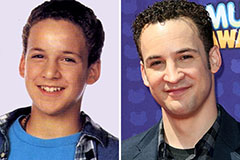Not known Facts About Dementia Fall Risk
Table of ContentsDementia Fall Risk for DummiesHow Dementia Fall Risk can Save You Time, Stress, and Money.Fascination About Dementia Fall RiskDementia Fall Risk Fundamentals Explained
A loss risk assessment checks to see exactly how most likely it is that you will certainly fall. It is primarily provided for older grownups. The evaluation generally consists of: This includes a series of questions concerning your overall wellness and if you have actually had previous falls or issues with balance, standing, and/or strolling. These devices test your strength, equilibrium, and stride (the method you walk).Treatments are suggestions that might reduce your danger of falling. STEADI includes three actions: you for your risk of falling for your risk variables that can be boosted to attempt to avoid drops (for instance, balance issues, damaged vision) to lower your risk of falling by using reliable techniques (for example, supplying education and learning and sources), you may be asked numerous questions consisting of: Have you dropped in the previous year? Are you stressed regarding dropping?
If it takes you 12 secs or more, it might mean you are at greater risk for an autumn. This examination checks stamina and balance.
The settings will get tougher as you go. Stand with your feet side-by-side. Relocate one foot halfway ahead, so the instep is touching the large toe of your various other foot. Relocate one foot fully in front of the various other, so the toes are touching the heel of your various other foot.
The smart Trick of Dementia Fall Risk That Nobody is Discussing
Many drops happen as an outcome of several adding elements; therefore, managing the risk of falling begins with identifying the variables that add to fall threat - Dementia Fall Risk. A few of the most pertinent risk factors include: Background of prior fallsChronic medical conditionsAcute illnessImpaired gait and balance, lower extremity weaknessCognitive impairmentChanges in visionCertain risky drugs and polypharmacyEnvironmental variables can also increase the risk for falls, consisting of: Poor lightingUneven or damaged flooringWet or slippery floorsMissing or damaged hand rails and order barsDamaged or poorly equipped tools, such as beds, wheelchairs, or walkersImproper use assistive devicesInadequate supervision of the individuals residing in the NF, consisting of those who display aggressive behaviorsA successful loss threat monitoring program needs a detailed professional analysis, with input from all members of the interdisciplinary team

The care plan need to also consist of treatments that are system-based, such as those that advertise a secure atmosphere (ideal lights, hand rails, get bars, etc). The effectiveness of the treatments ought to be evaluated regularly, and the treatment plan changed as necessary to reflect modifications in the loss threat evaluation. Carrying out a loss threat administration system utilizing evidence-based ideal practice can reduce the prevalence of falls in the NF, while limiting the potential for fall-related injuries.
Dementia Fall Risk Things To Know Before You Buy
The AGS/BGS guideline recommends screening all adults aged 65 years and older for autumn threat each year. This testing contains asking clients whether they have actually fallen 2 or even more times in the past year or looked for medical attention Check Out Your URL for a fall, or, if they have actually not fallen, whether they really feel unstable when walking.
Individuals that have dropped when without injury must have their equilibrium and stride examined; those with gait or equilibrium irregularities need to get additional assessment. A history of 1 loss without injury and without stride or equilibrium problems does not call for further analysis beyond continued annual fall threat testing. Dementia Fall Risk. An autumn threat assessment is needed as component of the Welcome to Medicare exam

The Ultimate Guide To Dementia Fall Risk
Documenting a falls background is one of the quality indications for fall avoidance and management. A crucial component of threat assessment is a medicine evaluation. Numerous courses of drugs raise loss threat (Table 2). Psychoactive medications in certain are independent forecasters of drops. These drugs have a tendency to be sedating, change the sensorium, and hinder equilibrium and stride.
Postural hypotension can usually be reduced by lowering the dose of blood pressurelowering drugs and/or stopping medications that have orthostatic hypotension as an adverse effects. Use of above-the-knee support hose pipe and copulating the head of the bed elevated might also minimize postural decreases in high click to read blood pressure. The suggested components of a fall-focused physical assessment are displayed in Box 1.

A pull time better than or equal to 12 secs recommends high autumn risk. The 30-Second Chair Stand test evaluates lower extremity toughness and equilibrium. Being incapable to stand directory from a chair of knee elevation without making use of one's arms suggests raised fall threat. The 4-Stage Equilibrium test evaluates static equilibrium by having the person stand in 4 placements, each gradually a lot more tough.
 Ben Savage Then & Now!
Ben Savage Then & Now! Josh Saviano Then & Now!
Josh Saviano Then & Now! Kelly McGillis Then & Now!
Kelly McGillis Then & Now! Ross Bagley Then & Now!
Ross Bagley Then & Now! Jennifer Love Hewitt Then & Now!
Jennifer Love Hewitt Then & Now!